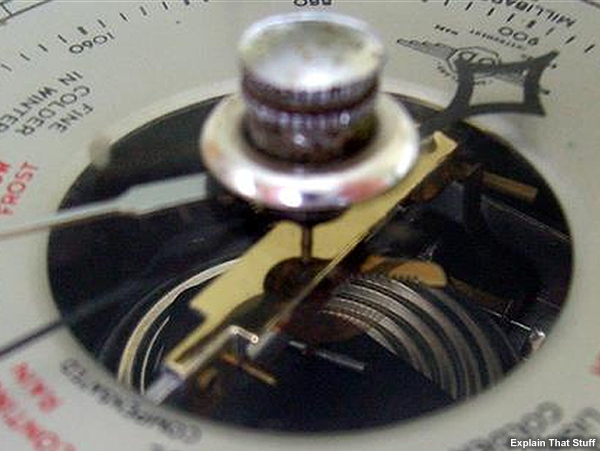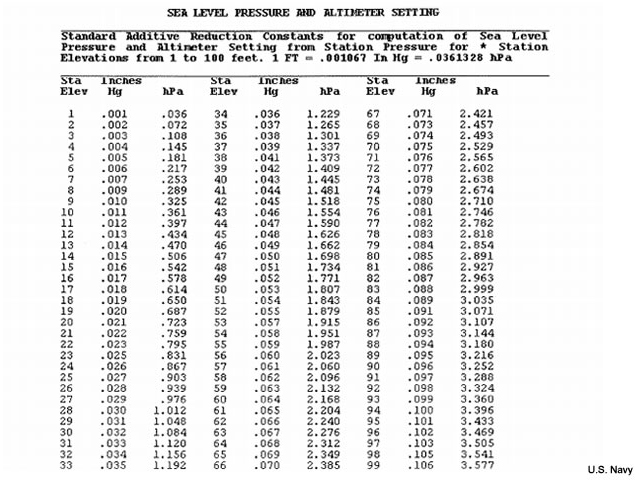Measuring Atmospheric Pressure

Now, you move a bit higher on the ship and find a shady area away from obstructions to do your pressure and wind observations. You'll start with the atmospheric pressure. This value is important because it relates to the pressure altitude, density altitude, and altimeter setting, all of which are critical values for aviation.
Atmospheric pressure is measured by a precision aneroid barometer. At sea, certain vessels may be authorized to use a marine barograph as a backup. The pressure is typically reported in hectopascals (hPa, equivalent to a millibar) and inches of mercury (Hg). Hectopascals are the international unit of measure and inches of mercury is used in the U.S. for aviation purposes.
1 inch Hg = 33.86389 hPa
1 hPa (1 mb) = 0.02952998 inch Hg
Typically, three atmospheric pressure values need to be determined. These values play an important role in aircraft operations.
Station pressure
Station pressure is the pressure determined from the aneroid barometer with any instrument correction added. It is reported in inches of mercury to the nearest 0.005 inch Hg. Station pressure can be used to derive sea level pressure and altimeter setting.
Sea level pressure

Sea level pressure is the atmospheric pressure computed to represent the pressure at mean sea level. The pressure reported from the ship is derived by adding a value representing the pressure exerted by the column of air existing between the barometer and sea level. These values are called Additive Reduction Constants.